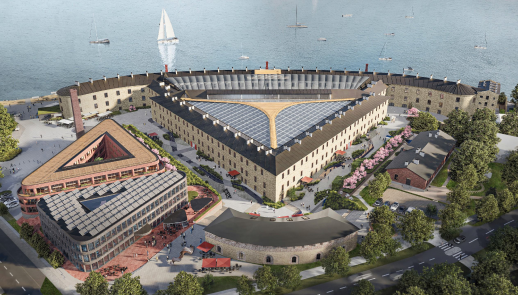Patarei Sea Fortress is Estonia’s first heritage-listed building to apply for international LEED certification, the design, construction and maintenance of which follow the principles of environmental sustainability and sustainable development.
Aavo Kokk, CEO of US Real Estate, said that the company will apply for LEED certification for all new developments, including the Golden Gate office building at Ahtri 6.
“However, in the case of the Sea Fortress, it is a real challenge that will be a valuable experience for all parties. In a historic building, not everything can be done in the same way as in a new building, because you have to use the existing parts of the building. The most important measure in earning LEED points here is to prevent environmental impact, then reduce consumption and introduce sustainable energy production,” said Kokk.
US Real Estate, the developer of Patarei Sea Fortress, is being advised by Forus Haldus, a highly experienced company in the field, on the application for LEED certification.
So far, nearly 700 000 square metres of commercial and office space in Estonia has been LEED certified.
LEED, or Leadership in Energy and Environmental Design, was developed by the US Green Building Council in the USA. The first version of the standard was published in 1998.
The application for certification starts in the planning and design phase of a building, where LEED requirements are incorporated into the design. The certificate is issued once the building is completed. It is also possible to apply for LEED certification if the building has been in use for a number of years or if it is a very old building. In this case, the LEED rating system focuses on sustainable building maintenance, management and energy efficiency. However, the certification of such a building must be renewed every three years.
LEED certification is divided into four different levels, which must be achieved by earning a certain number of points. Points are awarded in six categories: good location and transport facilities, sustainable use of land, reduced water consumption, efficient use of energy, management of materials and resources, indoor environmental quality.
